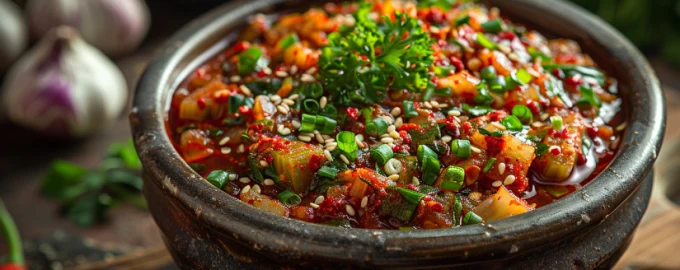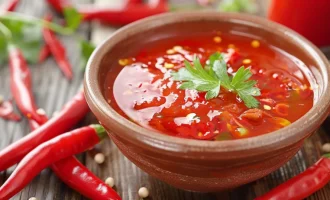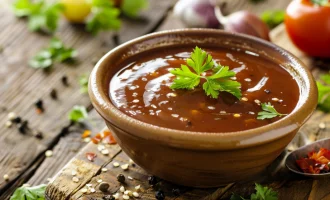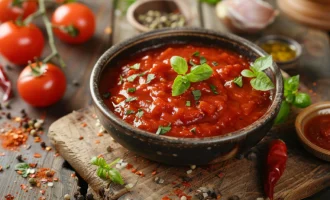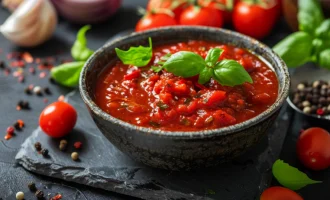Kimchi sauce, a versatile condiment inspired by the flavors of traditional Korean kimchi, captures the essence of this beloved fermented dish in a more accessible, quick-to-prepare form. Kimchi itself has a storied history dating back centuries, integral to Korean cuisine with its origins in the need to preserve vegetables for the winter months. It’s renowned for its complex flavor profile—spicy, tangy, and umami-rich—and its health benefits, particularly for digestion. Kimchi sauce can be used to add depth and spice to a variety of dishes, from stir-fries and marinades to dressings and dips, embodying the vibrant taste of kimchi in a convenient, ready-to-use sauce.
- Korean chili flakes 30 g
- Garlic 20 g
- Ginger 10 g
- Fish sauce 20 ml
- Soy sauce 10 ml
- Sugar 15 g
- Rice vinegar 15 ml
- Kimchi brine 30 ml
- Water 30 ml
- Sesame oil 10 ml
- Sesame seeds 5 g
- In a bowl, combine the Korean chili flakes, minced garlic, and minced ginger. These ingredients form the spicy and aromatic base of the sauce.
- Stir in the fish sauce, soy sauce, sugar, rice vinegar, and kimchi brine. The fish sauce and kimchi brine introduce umami and depth, while the soy sauce adds saltiness, and the sugar and rice vinegar balance the flavors with sweetness and acidity.
- Gradually add water to reach your preferred consistency. The sauce can be kept thick for dips or thinned out for dressings and marinades.
- Drizzle in the sesame oil and mix well. Sesame oil adds a nutty flavor and aroma, rounding out the sauce’s profile.
- Sprinkle sesame seeds over the sauce before serving for added texture and presentation.
Storage Tips
Kimchi sauce can be stored in an airtight container in the refrigerator for up to 2 weeks. The flavors will continue to meld and develop over time, often resulting in a richer taste.
Useful Properties of the Main Ingredient
Korean chili flakes, or gochugaru, are not only pivotal for the sauce’s heat but are also rich in vitamins A and C, which are antioxidants that can help improve immune function and skin health.
Interesting Facts
- Kimchi’s history in Korea dates back to the Three Kingdoms period (37 BCE–7 CE), evolving over centuries with the introduction of chili peppers in the 17th century.
- The process of making traditional kimchi involves salting the vegetables to remove water, then seasoning them with various spices and allowing them to ferment. Kimchi sauce simplifies this flavor complexity into a versatile condiment.
- Kimchi and its derivatives, like kimchi sauce, are celebrated for their probiotic qualities, attributed to the fermentation process, which promotes a healthy gut microbiome.
This recipe for kimchi sauce offers a way to infuse dishes with the distinctive, bold flavors of traditional Korean kimchi in a quick and accessible manner, making it a perfect addition to enhance a wide range of culinary creations.

